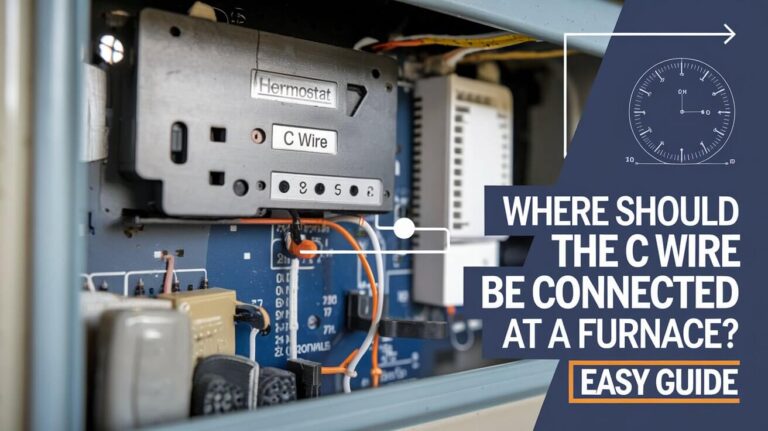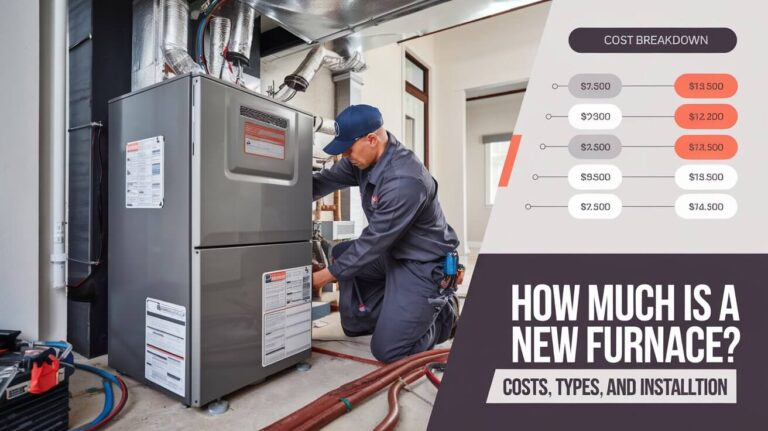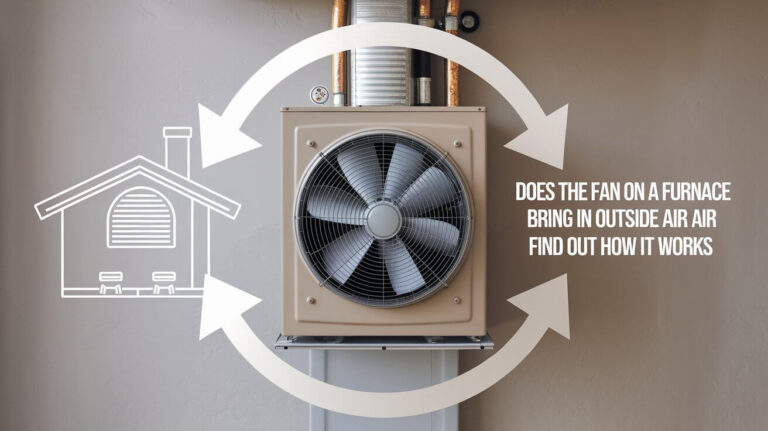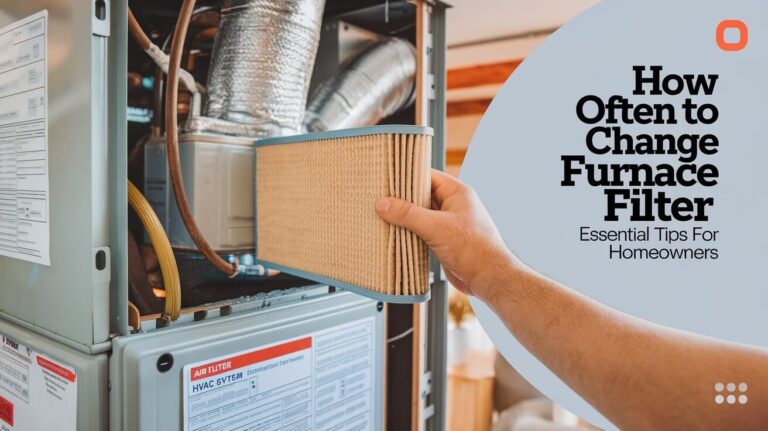What is a Furnace? Types, Costs, and How It Works Explained
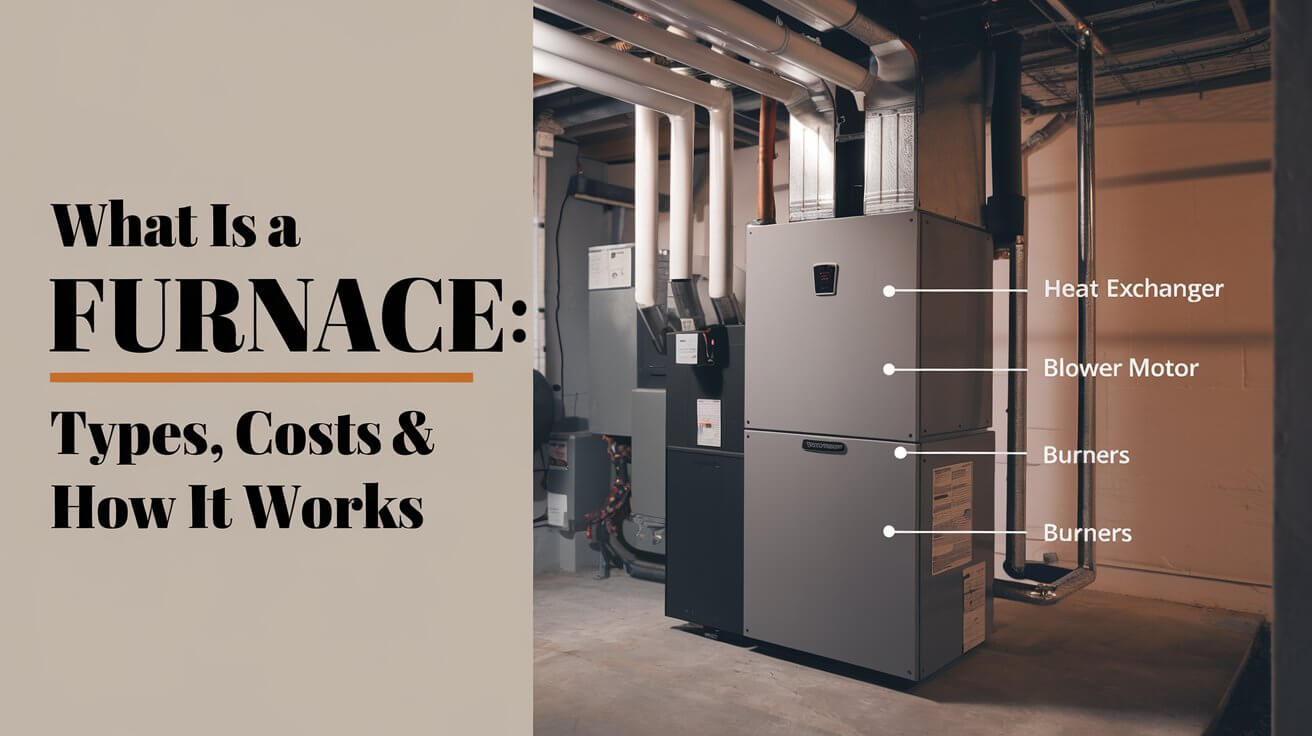
A furnace is a heating device that produces heat by burning fuel or using electrical energy and distributes it through air or water to warm indoor spaces. Commonly found in homes across North America, furnaces are crucial for keeping buildings comfortable during cold seasons. Furnaces come in various types, including gas, electric, oil, and propane models, each with different efficiencies, costs, and suitability for specific climates or homes.
In this article, we’ll dive into the mechanics, types, efficiency, costs, and maintenance tips to help you understand how furnaces work and how to choose the right one for your needs.
How Does a Furnace Work?
A furnace operates by generating heat and circulating it throughout a space, typically through ducts and vents. The core elements of any furnace include:
- Burner or Heating Element: Where gas, oil, or electricity generates heat.
- Heat Exchanger: Transfers heat from the burner to the air circulating through the home.
- Blower Motor and Fan: Pushes warm air through the ductwork and vents.
- Thermostat: Controls when the furnace turns on and off based on the indoor temperature setting.
- Flue (in combustion furnaces): Allows exhaust gases to escape safely outdoors.
When the thermostat senses the temperature has dropped below the desired setting, the furnace activates. The blower fan distributes warm air throughout the home, and once the target temperature is reached, the system shuts off.
Types of Furnaces
Gas Furnaces
Gas furnaces are the most common type used in the U.S. They use natural gas as a fuel source, igniting the gas to generate heat.
- Efficiency: Gas furnaces can reach high efficiency ratings, with AFUE (Annual Fuel Utilization Efficiency) scores up to 98%.
- Pros: Low operational cost due to affordable gas prices.
- Cons: Requires gas lines and regular maintenance for safe operation.
- Best For: Homes with access to natural gas.
Electric Furnaces
Electric furnaces generate heat through resistance heating elements. They are compact and have fewer components than combustion-based systems.
- Pros: Simple installation, longer lifespan (up to 20 years), and minimal maintenance.
- Cons: Higher operating cost due to electricity prices.
- Best For: Areas where electricity is cheaper or where gas isn’t available.
Oil Furnaces
Oil-burning furnaces are common in regions without natural gas access, such as parts of the Northeastern U.S. These systems rely on heating oil stored in tanks.
- Pros: Reliable performance in extremely cold climates.
- Cons: Requires more maintenance and refilling fuel tanks.
- Best For: Homes in rural areas without gas infrastructure.
Propane Furnaces
Propane, a byproduct of gas and oil refining, serves as an alternative heating source in off-grid areas. Propane furnaces are similar to gas models but use stored propane tanks.
- Pros: Clean-burning and effective in remote areas.
- Cons: Propane storage tanks take up space and require regular refilling.
- Best For: Homes in remote or rural regions.
Choosing the Right Furnace Size
Selecting the correct furnace size is crucial for efficiency and comfort. An undersized furnace will struggle to heat your home, while an oversized unit may waste energy. HVAC professionals consider the following factors when determining the right size:
- Home size and ceiling height
- Climate conditions in your area
- Level of insulation and number of windows
Proper sizing ensures that the furnace works efficiently without unnecessary wear and tear.
Energy Efficiency and Environmental Impact
Furnaces come with different energy efficiency levels, indicated by the AFUE rating. This rating measures how efficiently a furnace converts fuel into heat.
- Standard Efficiency: Models with AFUE ratings around 80%.
- High Efficiency: Furnaces with AFUE ratings above 90%—these models use advanced heat exchangers and blowers to minimize heat loss.
High-efficiency models reduce environmental impact by lowering carbon emissions. Gas furnaces are more efficient than oil models, but electric furnaces have the lowest environmental impact in regions that rely on renewable electricity.
Maintenance Tips for Long-Lasting Performance
Proper maintenance extends the life of your furnace and ensures optimal performance. Here are some key maintenance tasks:
- Replace air filters every 3 months to improve airflow and indoor air quality.
- Clean the blower and heat exchanger annually to prevent dust buildup.
- Inspect the ignition system in gas furnaces to ensure proper function.
- Check ducts for leaks and seal them with aluminum foil tape to reduce heat loss.
For gas furnaces, it’s essential to monitor the flame—if it’s anything other than blue, the burners may need professional cleaning. Regular inspections by an HVAC expert are recommended to prevent major repairs.
Furnace Costs and Replacement Considerations
The cost of a new furnace varies based on the type, brand, and installation fees. Here’s a breakdown:
- Electric Furnaces: $3,000 – $5,500
- Gas Furnaces: $3,800 – $7,600
- Oil Furnaces: $4,000 – $6,700
Installation costs can add several thousand dollars, depending on labor and permit fees. While electric furnaces are typically cheaper to install, gas models are more cost-effective in the long run due to lower fuel costs.
When to Replace a Furnace
- Gas/Oil Furnace Lifespan: 15 years
- Electric Furnace Lifespan: 20 years
If your furnace frequently breaks down, produces odd noises, or results in high energy bills, it might be time to consider a replacement.
Furnaces vs. Heat Pumps: Which One Should You Choose?
In regions with moderate climates, heat pumps offer an energy-efficient alternative to furnaces. These systems can both heat and cool your home, eliminating the need for separate air conditioning units. However, in extremely cold regions, furnaces are more reliable.
Heat pumps can struggle to maintain efficiency below freezing temperatures, making furnaces a better option for areas with harsh winters.
Safety Tips and Regulations for Furnace Use
To ensure safe furnace operation:
- Install carbon monoxide detectors near the furnace and in sleeping areas.
- Schedule annual professional inspections to detect any gas leaks or ventilation issues.
- Follow local building codes for installation and maintenance.
If you smell gas or suspect a leak, turn off the furnace immediately and contact an HVAC technician.
Conclusion: Finding the Right Furnace for Your Needs
Choosing the right furnace involves considering factors like fuel availability, energy efficiency, climate, and your budget. Gas furnaces remain the most popular choice, but electric models offer longer lifespans with minimal maintenance. In rural areas, oil or propane systems provide reliable heat.
Working with an HVAC expert can help you select the right size and type of furnace for your home, ensuring maximum efficiency and comfort. Regular maintenance and timely replacements will keep your system running smoothly for years to come.
Frequently Asked Questions
What size furnace do I need for my home?
The size depends on your home’s square footage, insulation, and climate conditions. An HVAC expert can perform a load calculation to determine the best size.
How often should I replace furnace filters?
Replace filters every 3 months, or more frequently if you have pets or allergies.
What’s the difference between a gas furnace and an electric furnace?
Gas furnaces are more cost-effective in the long run, while electric models are easier to install and maintain.
Can a heat pump replace a furnace?
In mild climates, yes. However, in colder areas, a furnace is more reliable for consistent heating.

